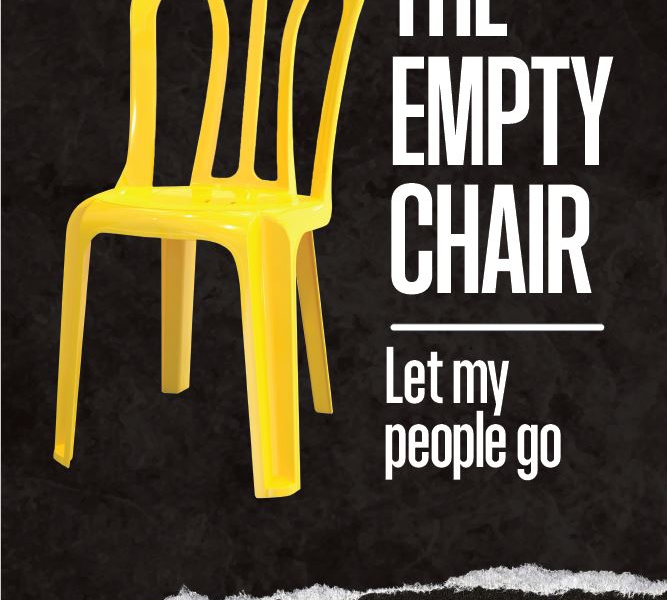Whether we like it or not, every now and then we get a serious reminder of where we live and how our very normal daily routine of work, school, family, stating our opinion and going wherever we want whenever we want is anything but normal in this neighborhood. Israelis’ normalcy is actually an astonishing accomplishment. But just as flooding occasionally hits low regions protected by dikes, Israelis’ robust democratic, Western lifestyle, is occasionally disrupted by those determined to do so. When this happens, we are reminded of the high price in human suffering that we pay to live in what is termed “the villa in the jungle.”
We had hoped that our “where we live reminder” had reached its quota during Operation Protective Edge. After the 50 days of incoming missiles and the deaths of civilians and so many soldiers, we hoped to get back to normalcy for a few years – at least, until the need again arose to take up arms to protect ourselves.
Complete normalcy in Israel is relative, because the daily threats are always present. These dangers are mostly thwarted, but just like the dikes that allow daily life to continue in low-lying areas, some storms inevitably cause damage.
The new murderous Palestinian fad of running over Israelis at bus and light-rail stops in Jerusalem (with one incident in Tel Aviv) and stabbing those who avoid the oncoming vehicle of death has brought us back to our siege mentality of the second intifada over a decade ago. The recent violent unrest amongst Israeli Arabs, triggered by the police shooting in the village of Kafr Kana of a resident who attacked a police car with a knife, and the Jerusalem violence caused by incitement surrounding the Temple Mount are two ugly and frightening conflagrations running on parallel but separate tracks. The two seem to morph into one immense wave of hatred, giving us once again the feeling of living under siege.
Are we seeing the beginning of another intifada? Most believe it is still too early to tell, but there is an eerie déjà vu in the air. Alex Fishman recently wrote in Yediot: “The despair for you and your family’s personal security takes hold and without waiting for instructions, you already consider whether or not to go to Jerusalem, whether or not to get on the bus, wait for a train or go through the nearest Arab town. If this insanity is not stopped now, we will find ourselves in the same dark days of the second intifada.”
The recent round of violence and mayhem began in East Jerusalem (even though its Palestinian population are Israeli citizens, they do not view themselves as Israeli Arabs). The capital has borne the brunt so far of this new Palestinian aggression of striking out at Israelis with a car, van or bulldozer. Similar to the suicide bomber, the driver in a vehicular attack has prepared to die in the act of murdering as many Jews as possible, revealing yet again the death-worshiping aspect of militant Islam.
When the Wakf Islamic trust overseeing the Temple Mount accused the Israeli police of going deep into the Aksa Mosque, Jordan recalled its ambassador in protest of Israel’s purported desecration of the mosque.
It apparently was irrelevant that this “intrusion” was part of an attempt to keep order and track down rioters who regularly hide in the mosque. A large cache of stones, bottles and Molotov cocktails was found in the Aksa Mosque, a stark example of how the borders between worship and faith-inspired violence are blurred in radical Islam.
Insisting on being offended, Jordanian Foreign Minister Nasser Judeh said, “These violations are infuriating the emotions and the sensitivity of 1.5 billion Muslims around the world.” Amman said it was reassessing its 20-year-old peace treaty with Israel.
Not surprisingly, Turkish Prime Minister Ahmet Davutoglu chimed in and called on “the world and the Muslim community to protect al-Aksa Mosque” and termed any Israeli presence on the Mount as “utter cruelty.” Those who perpetrated the violence on the streets of Jerusalem and made threats in diplomatic channels pretended to be oblivious to the clear messages issued by Prime Minister Netanyahu on nearly a daily basis that the government has no intention of changing the “status quo.” Since the Six Day War, Israel policy prohibits Jews from praying on the Temple Mount and gives Muslim authorities full custodian rights, while Israel retains security control.
As I write this in mid-November, Netanyahu and PA President Abbas flew to Amman to meet Jordan’s King Abdullah and John Kerry and jointly call for an end to the violence and incitement around the Temple Mount issue.
Netanyahu again assured the leaders that Israel did not intend to change the status quo on the Mount. He also told the King that Israel respected the Jordanian monarchy’s role as custodian of the Muslim holy places in Jerusalem, including the Aksa compound. It should be pointed out that Abbas refused
to participate in the meeting with Netanyahu. A recent Jerusalem Post editorial concluded: “By no stretch of the imagination can the desire of a few Jews to pray at what they believe to be the holiest site in the world be construed as justification for violence, for scrapping a mutually beneficial peace treaty, for downgrading diplomatic ties, for rioting. If anything, the senseless and murderous violence directed at random pedestrians reveals a depraved religious mentality; the hypersensitivity to real or perceived insult belies a supreme insecurity and a proclivity for playing the victim.”
Israel’s 1967 decision to forbid Jews from praying on the Temple Mount in order to keep the peace has, ironically, made the issue a lightning rod that right-wing politicians and activists take advantage of by using their right to visit. They should agree to temporarily forgo this right to visit the Temple Mount, and hopefully refrain from statements and actions that might escalate tensions. But make no mistake, ultimately it is the religious and ideological fanaticism of a large swath of the Muslim world that is fueling the unrest and the violence. No amount of explaining and reassuring will change this sad fact.
And here lies the link to the rioting amongst Israeli Arabs. In the weeks preceding the Kafr Kana police shooting, with the Jerusalem violence in full swing, there was no unrest in the Arab towns and villages of Israel. Only after the incident in Kafr Kana did all hell break loose in Arab areas, although video from the incident clearly shows the victim attacking the police vehicle and threatening the policemen.
While Israeli Arabs are full citizens and enjoy a standard of living and freedom almost completely unheard of in the Arab world, more can be done to reduce the discrepancy in resources and infrastructure between the Jewish and Arab sectors and to fight discrimination. Therefore, while the Kafr Kana incident might be a kind of Israeli “Ferguson, Missouri” issue, it quickly became something much less justified and far more sinister.
As in Ferguson, the spark that lit the rioting was the claim of discrimination and that the police are trigger happy. But very quickly, the demonstrations turned violent with rocks and Molotov cocktails, and attacking security personnel and civilians. Demonstrators were not calling for social and economic equality, but egged on by Israeli Arab MKs, instead called for eliminating the State of Israel and replacing it with a Palestinian state. And of course, with more than two decades of incitement by “The Northern Branch of the Islamic Movement,” a popular Israeli Arab political movement with a one-issue platform, to fight Israel because it is supposedly trying to destroy the Al-Aksa Mosque, the rioting quickly took on the slogans of the Jerusalem disturbances, accusing Israel of trying to end Muslim control on the Temple Mount. The Kafr Kana incident was easily manipulated by the Northern Branch as the spark to light the fire they have been trying to kindle for years.
Regarding the Temple Mount, the incitement of the Palestinian Authority is a well-documented danger. But the Israeli Arab incitement has the potential to lead to a violent revolt by Israeli citizens. There are three reasons behind the recent violence in the Arab Israeli sector. First, a complete disrespect for the rule of law as represented by the state. Second, the incitement mentioned above and third, the newfound admiration amongst West Bank and Israeli Palestinian youth for ISIS.
Fishman said: “The fundamental resentment of Israel, together with their feelings of discrimination, justified or not, feed the growing hostility behind the riots … . Feelings of discrimination need to be dealt with but cannot be solved overnight. But the feeling of lawlessness must be resolved immediately and forcefully. This includes jail sentences for the perpetrators and those who are responsible for inciting the violence. Terrorists who kill innocent victims must have their homes blown up (a measure used only against West Bank terrorists until now). … This is no routine police operation. This needs to be the defining mission of the police, in tandem with the Shin Bet (State Security Service) with one goal in mind: a return to law and order in those areas within the Green Line that think they can cut themselves off from the state and that spawn potential terrorist murderers.” He concluded, “These are all short-term measures to stop the anarchy in its infancy. The long-term solution lies only in dialogue between equal citizens with the aim of resolving perceived discrimination between sectors.”
So once again, our daily civilian life is on the verge of having to deal with the violent abnormality that has become a fundamental part of today’s Middle East. With virtually every Arab country in some sort of upheaval, and ISIS continuing to build its caliphate of death and destruction, this is bound to impact Israeli Arabs as well as Jerusalem. I guess it’s not too surprising that these periods of abnormality are liable to occur more often. None of us want to go through this again, and most of us are willing to make sacrifices to achieve a two-state solution that will not gravely threaten our existence; but with the madness currently running rampant in our region, we cannot put our security in anyone’s hands but our own. There is no room for error. If the price of not risking our existence is that we have to go through siege periods, then it is unfortunate but so be it. This is the price of being a Zionist in the Middle East.
It is difficult not to be enraged as more violence results in the death of innocent Israelis going about their daily business. No matter what we do or say, how much land we withdraw from or how many settlements we dismantle, many feel the fundamental problem in our region is the continued refusal of the Palestinians to accept the existence of Israel. It seems clear that a solution to the conflict will not be reached only by resolving borders or water rights, or by redressing social and economic grievances.
The fact that our current ruling coalition seems to be on the verge of shattering, with new elections looming, is not helping to stabilize the situation. I am cautiously optimistic that this current round of violence will not spiral out of control, because if it does, both sides lose. But the world needs to stop reinforcing Palestinians’ incessant claims that they are the constantly insulted victims who do not need to stop incitement. If this doesn’t happen soon, then the abnormality of living our daily life under siege will sadly become the norm, and then today’s violence will be almost a fond memory.
Mylan Tanzer is a Portland native who moved to Israel in 1981. He was the founding CEO of the first Israeli cable and satellite sports channel. Since 2005, he has launched, managed and consulted for channels and companies in Israel and Europe. Tanzer lives in Tel Aviv with his wife and five children. He can be reached at mylantanz@gmail.com.





